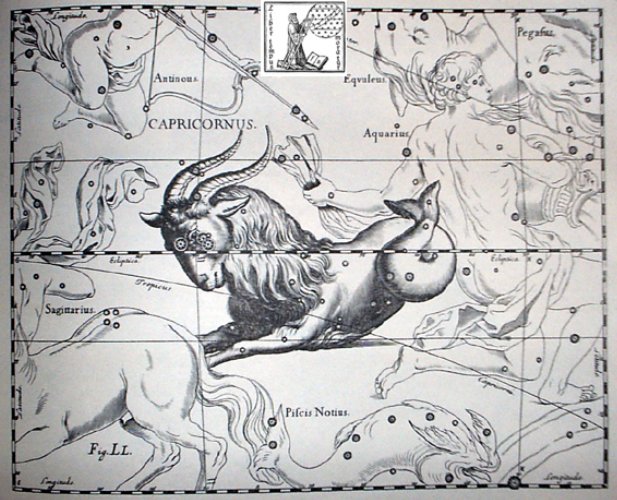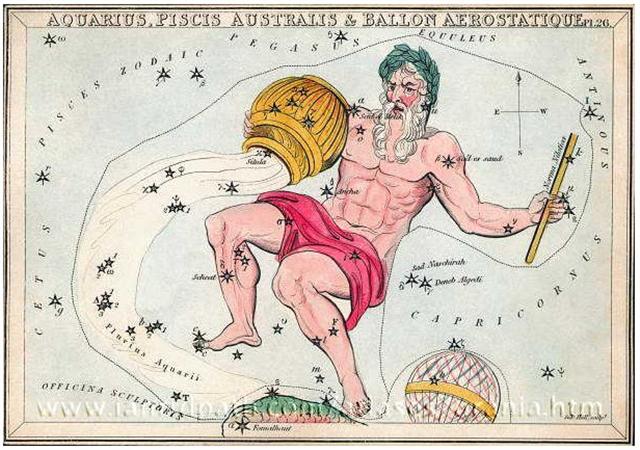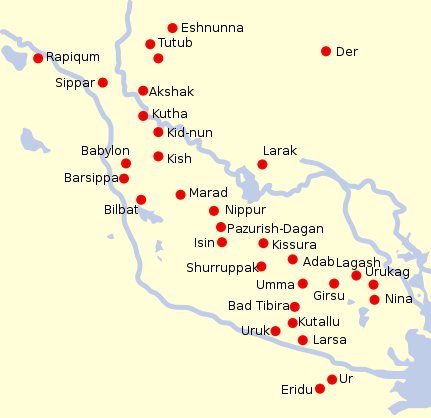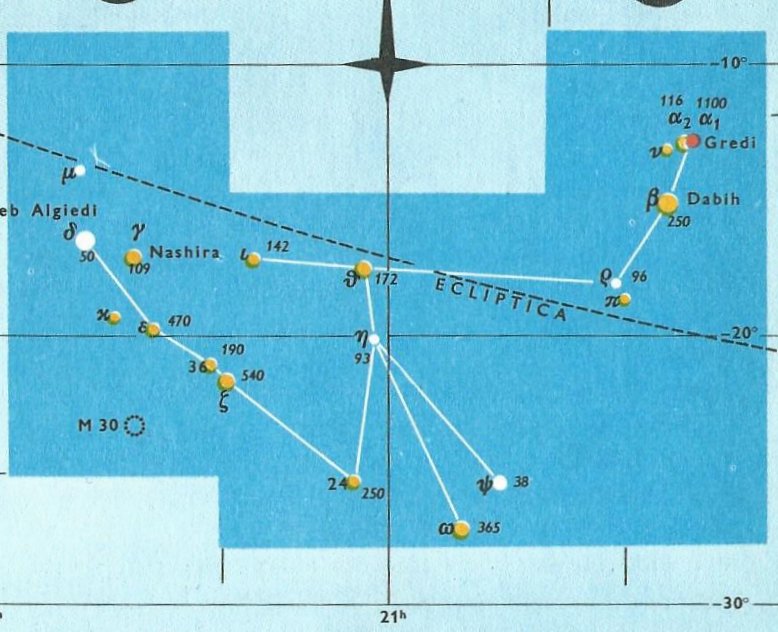There are 12 Chinese types of year:
|
Rat |
Ox |
Tiger |
Rabbit |
Dragon |
Snake |
Horse |
Goat |
Monkey |
Rooster |
Dog |
Pig |
|
1 |
2 |
3 |
4 |
5 |
6 |
7 |
8 |
9 |
10 |
11 |
12 |
"The first day of each Chinese year will always fall
sometime between January 21 and February 21, inclusive. The
traditional Chinese calendar is lunisolar, like the
Hebrew calendar but unlike the Western (Gregorian) solar
calendar or the Islamic lunar calendar."
The C text has 3 + 1 glyphs illustrating the season
immediately following the Sun at
Sadalsud:
The last and special case marks February 23 (anciently known as Terminalia) which at the time of rongorongo had Castor culminating at 21h. This was 16 days after February 7 (day 38 in the current year = day 403 in the preceding year):
| e vaha noho ragi |
erua ahi |
i te hau tea |
Erua hau tea |
i te henua i te rima |
|
Ahi, Fire; he-tutu i te ahi to light a fire. Ahiahi = evening; ahiahi-ata, the last moments of light before nightfall. Vanaga. 1. Candle, stove, fire (vahi); ahi hakapura, match; ahi hakagaiei, firebrand waved as a night signal. P Mgv.: ahi, fire, flame. Mq.: ahi, fire, match, percussion cap. Ta.: ahi, fire, percussion cap, wick, stove. 2. To be night; agatahi ahi atu, day before yesterday. 3. Pau.: ahi, sandalwood. Ta.: ahi, id. Mq.: auahi, a variety of breadfruit. Sa.: asi, sandalwood. Ha.: ili-ahi, id. Ahiahi, afternoon, night; kai ahiahi, supper. P Pau., Mgv., Mq., Ta.: ahiahi, afternoon, evening. Ahipipi (ahi 1 - pipi 2) a spark, to flash. Churchill. |
 |
 |
 |
 |
 |
 |
 |
| Ca5-32 (137) |
Ca5-33 |
Ca5-34 |
Ca5-35 |
Ca6-1 |
Ca6-2 |
Ca6-3 |
| CLOSE TO THE SUN: |
| Febr 4 |
5 |
6 |
7 (403) |
8 |
9 (40) |
10 |
|
... On February 9 the Chorti Ah K'in, 'diviners', begin the agricultural year. Both the 260-day cycle and the solar year are used in setting dates for religious and agricultural ceremonies, especially when those rituals fall at the same time in both calendars. The ceremony begins when the diviners go to a sacred spring where they choose five stones with the proper shape and color. These stones will mark the five positions of the sacred cosmogram created by the ritual. When the stones are brought back to the ceremonial house, two diviners start the ritual by placing the stones on a table in a careful pattern that reproduces the schematic of the universe. At the same time, helpers under the table replace last year's diagram with the new one. They believe that by placing the cosmic diagram under the base of God at the center of the world they demonstrate that God dominates the universe. The priests place the stones in a very particular order. First the stone that corresponds to the sun in the eastern, sunrise position of summer solstice is set down; then the stone corresponding to the western, sunset position of the same solstice. This is followed by stones representing the western, sunset position of the winter solstice, then its eastern, sunrise position. Together these four stones form a square. They sit at the four corners of the square just as we saw in the Creation story from the Classic period and in the Popol Vuh. Finally, the center stone is placed to form the ancient five-point sign modern researchers called the quincunx ...

|
| DRAMASA = σ Oct., χ Capricorni (320.0), ν Aquarii (320.3), γ Equulei (320.6), ο Pavonis (320.8) |
α Oct. (321.5), δ Equulei (321.7), φ Capricorni (321.8) |
KITALPHA (Part of a Horse) = α Equulei (322.0), ALDERAMIN (The Right Arm) = α Cephei (322.9) |
DAI = ι Capricorni (323.5), β Equulei (323.8) |
γ Pavonis (324.1), YAN = ζ Capricorni (324.6) |
Al Sa'd al Su'ud-22 (Luckiest of the Lucky) / Emptiness-11 (Rat)
TSIN = 36 Capricorni (325.2), ALPHIRK (The Flock) = β Cephei (325.7), SADALSUD = β Aquarii, ξ Gruis (325.9) |
no star listed (326) |
|
... β [Sadalsud] alone marked the sieu Heu, Hiu, or Hū, Void, anciently Ko, the central one of the seven sieu which, taken together, were known as Heung Wu, the Black Warrior, in the northern quarter of the sky ... |
| DAY 320 |
321 |
322 |
323 |
324 |
325 (→ 3-25) |
326 |
| CLOSE TO THE FULL MOON: |
| Aug 5 |
6 |
7 |
8 (11 * 20 → T20) |
9 |
10 |
11 |
|
9h (137.0)
σ¹ Ursa Majoris (137.0), κ Cancri (137.3), τ Cancri (137.4), ALSUHAIL (al Wazn, of the Weight) = λ Velorum (137.5), σ² Ursa Majoris (137.6), τ Ursa Majoris (137.7), ξ Cancri (137.8)
*96.0 = *137.4 - *41.4 |
κ Pyxidis (138.0), ε Pyxidis (138.5) |
π Cancri (139.2), MIAPLACIDUS = β Carinae (139.3), TUREIS (Little Shield) = ι Carinae (139.8) |
no star listed (140) |
θ Pyxidis (141.5), MARKAB VELORUM = κ Velorum (141.5), AL MINHAR AL ASAD (The Nose of the Lion) = κ Leonis (141.6), λ Pyxidis (141.9) |
Star-25 (Horse) / ANA-HEU-HEU-PO-5 (Pillar where debates were held)
ALPHARD (The Horse) = α Hydrae (142.3), ω Leonis (142.6), τ¹ Hydrae (142.7) |
Al Tarf-7 (The End)
ψ Velorum (143.3), ALTERF = λ Leonis, τ² Hydrae (143.4), ξ Leonis (143.5)*102.0 = *143.4 - *41.4 |
| 'July 9 |
10 |
11 |
(193 → Castor) |
13 |
14 |
(196 → Pollux) |
| DAY 137 |
138 |
139 |
140 |
141 |
142 |
143 |
| kua hau te haú o to
hau tea |
kua hipu koia etoru
hipu |
te henua ma te rima |
 |
 |
 |
| Ca6-4 |
Ca6-5 |
Ca6-6 (146) |
| CLOSE TO THE SUN: |
|
Febr 11 (42) |
12 (408) |
13 |
|
CASTRA
= ε Capricorni
(327.2),
BUNDA = ξ
Aquarii
(327.5)
SIRIUS (α
Canis Majoris) |
Mahar sha hi-na Shahū-26 (Western One in the Tail of the Goat)
NASHIRA =
γ
Capricorni
(328.0),
ν
Oct. (328.3), AZELFAFAGE
=
π¹
Cygni,
κ
Capricorni (328.7) |
Arkat sha hi-na Shahū-27 (Eastern One in the Tail of the Goat)
ENIF (The Nose) =
ε
Pegasi, ERAKIS =
μ
Cephei
(329.2),
46 CAPRICORNI,
JIH (the Sun) =
κ
Pegasi
(329.3),
ι
Piscis Austrini (329.4),
λ
Capricorni (329.6),
ν
Cephei (329.7),
DENEB ALGIEDI =
δ
Capricorni
(329.8)
*288.0 = *329.4 - *41.4 |
| BABYLONIAN ECLIPTIC CONSTELLATIONS: |
| 26 |
Mahar sha hi-na Shahū |
Western One in the Tail of the Goat |
γ (Nashira) Capricorni |
328.0 |
Febr 12 (408) |
| 27 |
Arkat sha hi-na Shahū |
Eastern One in the Tail of the Goat |
δ (Deneb Algiedi) Capricorni |
329.8 |
Febr 13 (409) |
| |
| 0 |
1-iku |
Field measure |
τ (Anunitum) Piscium |
16.5 |
April 6 (96) |
| |
| 1 |
Mahrū-sha-rishu-ku |
Front of the Head of Ku |
β (Sheratan), γ (Mesarthim) Arietis |
27.4 |
April 17 (107) |
| 2 |
Arku-sha-rishu-ku |
Back of the Head of Ku |
α (Hamal) Arietis |
30.5 |
April 20 (110) |

| te heheu ke - te niu kua huri |
ki te vai |
manu teketeke ki ruga |
takaure |
kua aha te takaure |
i te henua ma te rima |
 |
 |
 |
 |
 |
 |
| Ca6-11 |
Ca6-12 |
Ca6-13 |
Ca6-14 |
Ca6-15 |
Ca6-16 (156) |
| CLOSE TO THE SUN: |
| Febr 18 (414) |
19 (50) |
20 |
21 |
22 |
23 (Terminalia) |
|
22h (334.8)
KAE UH (Roof) = ο Aquarii (334.0), AL KURHAH (White Spot) = ξ Cephei (334.4), SADALMELIK (Lucky King) = α Aquarii, AL DHANAB (The Tail) = λ Gruis (334.6), ι Aquarii, ν Pegasi (334.7)*293.0 = *334.4 - *41.4 |
ι Pegasi (335.0), ALNAIR (The Bright One) = α Gruis (335.1), μ Piscis Austrini, υ Piscis Austrini (335.3), WOO (Pestle) = π Pegasi (335.7), BAHAM = θ Pegasi, τ Piscis Austrini (335.8) |
ζ Cephei (336.2), λ Cephei (336.3), -/270 Lac. (336.7), λ Piscis Austrini (336.8) |
μ Gruis (337.0), ε Cephei (337.2), 1/325 Lac. (337.3), ANCHA (Hip) = θ Aquarii (337.4), ψ Oct. (337.5), α Tucanae (337.9)
*296.0 = *337.4 - *41.4 |
Al Sa'ad al Ahbiyah-23 (Lucky Star of Hidden Things) / Shatabisha-25 (Comprising a Hundred Physicians)
ε Oct. (338.1), ρ Aquarii (338.2), 2/365 Lac. (338.5), SADACHBIA = γ Aquarii (338.6), π Gruis (338.9) |
β/172 Lac. (339.2), 4/1100 Lac. (339.4), π Aquarii (339.5)
*298.0= *339.4 - *41.4
CASTOR (α Gemini) |
|
... Al Sa'd al Ahbiyah ... has been interpreted the Lucky Star of Hidden Things or Hiding-places, because when it emerged from the sun's rays all hidden worms and reptiles, buried during the preceding cold, creep out of their holes!

|
Here (in the C text) there is no direct sign of a double day (Bissextum)
beyond February 23 (Terminalia), becuse Ca6-17 stands at
the beginning of the so-called Moon calendar. However, Moon implies 2
for
she has 2 faces and 59 = 2 * 29½.
|
tagata oho rima - ki
te marama |
koia kua oho |
ki te marama |
kua moe |
 |
 |
 |
 |
|
Ca6-17 (157
= 314 / 2) |
Ca6-18 |
Ca6-19 |
Ca6-20 |
|
CLOSE TO THE SUN: |
|
Febr 24
(420 = 7 * 60) |
25 |
26 |
27 (58 = 2 * 29) |
|
... The leap day was introduced as part of
the Julian reform. The day following the
Terminalia (February 23) was doubled,
forming the 'bis sextum - literally
'double sixth', since February 24 was 'the
sixth day before the Kalends of March' using
Roman inclusive counting (March 1 was the
'first day'). Although exceptions exist, the
first day of the bis sextum (February
24) was usually regarded as the intercalated
or 'bissextile' day since the third century.
February 29 came to be regarded as the leap
day when the Roman system of numbering days
was replaced by sequential numbering in the
late Middle Ages ... |
|
δ Tucanae (340.1), ρ Cephei (340.2), ν
Gruis (340.3), ζ Aquarii, δ Gruis (340.4),
5/1100 Lac. (340.7), σ Aquarii, 6/650 Lac.
(340.9)
*299.0 = *340.4 - *41.4
PROCYON (α Canis Minoris) |
υ Oct. (341.0), α/91 Lac. (341.1),
HOMAN (Hero) = ζ Pegasi,
β Piscis Austrini (341.2), ν Tucanae
(341.5), υ Aquarii (341.9) |
η Aquarii (342.1), σ Gruis (342.4),
SITULA (Water-jar) = κ Aquarii
(342.7)
*301.0 = *342.4 - *41.4 |
ε Piscis Austrini (343.5), ο Pegasi, β Gruis
(343.8) |
|
'Jan 28 |
29 |
30 |
31 (365 +
31 = 396) |
|
DAY 340 |
341 |
342 |
343 (=
7 * 7 * 7) |
 |
|
CLOSE TO
THE FULL MOON: |
|
Aug 25 (237 = 8 * 29½ +
1) |
26 |
27 |
28 |
|
Extended Net-26b (Ox)
μ Hydrae
(157.1) |
Maru-sha-arkat-Sharru-15 (4th Son behind the
King)
SHIR (Possessing Luminous
Rays) =
ρ
Leonis
(158.9) |
p Carinae (159.3) |
φ Hydrae (160.3) |
|
'July 29 (210 = 420 / 2) |
30 |
31 |
'Aug 1 |
|
DAY 157 (= 314 / 2) |
158 |
159 |
160 |
|
kua ka te ahi i te
rima aueue - te ika |
te marama kua
hua |
marama kua tuu i
te kihikihi |
|
Hua. 1.
Testicle. 2. Figuratively: son, hua
tahi, only son; fruits of the earth;
to grow well (of fruits). 3. To cause a
fight, a quarrel. Hua-ai,
generation, as lineage of direct
descendents; contemporaries.
Huahua, coccyx of bird,
'parson's nose': huahua moa,
huahua uha. Huataru, a
creeper (Chenopodium ambiguum).
Vanaga. 1. The same; ki hua,
again, to continue, to strain, to
struggle, to move, to repeat, over and
above. Mq.: hua, the same, to
return, to recommence. 2. To bloom, to
sprout; flower, fruit (huaa);
huaa tae oko, huaa vahio,
young fruit; hua atahi, only son;
huahaga, fruit; mei te huahaga
o tokoe kopu, the fruit of thy body;
tikea huahaga, deceptive
appearance. P Pau.: ua, to be
born; huahaga, lineage. Mgv.:
hua, to produce (said of trees,
grain, etc.), blooming time of flowers,
abundance of fruit. Mq.: hua, to
produce, to bear fruit. Ta.: ua,
to sprout. Huahua. 1. Tailless
fowl. 2. Vein, tendon, line. 3. Mgv.:
huahua, pimples covering the face.
Ta.: huahua, id. Mq.: hua,
tubercules. Sa.: fuafua, abscess
on hand or feet. Ma.: huahua,
small pimples. Pau.: Hua-gakau,
rupture. Ta.: áau, entrails. Sa.:
ga'au, id. Ma.: ngakau,
id. Churchill.1. Fruit. 2. Egg. 3.
Tā hua
= 'genealogical writing' or 'same
writing'. Fischer. |
 |
 |
 |
 |
|
Ca6-21 (161) |
Ca6-22 (Ohiro) |
Ca6-23 (Oata = Clear) |
Ca6-24 |
|
CLOSE TO THE SUN: |
|
Febr 28 (59) |
29 (365 + 60 = 425) |
March 1 (426 - 365 = 61) |
2 (31 + 28 + 2 = 61) |
|
... February 29 came to be regarded as
the leap day when the Roman system of
numbering days was replaced by
sequential numbering in the late Middle
Ages ... |
|
ρ Gruis (344.0),
MATAR (Rain) = η Pegasi
(344.2), η Gruis (344.6), β Oct. (344.7) |
λ Pegasi (345.0), ξ Pegasi (345.1), ε
Gruis (345.3), τ Aquarii (345.7), ξ Oct.
(345.8), μ Pegasi (345.9) |
ι Cephei (346.0), λ Aquarii, γ Piscis
Austrini, σ Pegasi (346.5) |
SCHEAT AQUARII = δ
Aquarii (347.0),
ρ
Pegasi (347.2),
δ
Piscis Austrini (347.4),
FOMALHAUT (Mouth of the Fish)
=
α
Piscis Austrini,
τ
Gruis (347.8)
*306.0 = *347.4 - *41.4 |
|
'Febr 1 (32) |
2 |
3 |
4 |
|
DAY 344 |
345 |
346 |
347 |
|
CLOSE TO THE FULL MOON: |
|
Aug 29 (80 + 161 = 241) |
30 (425 - 183 = 242) |
31 |
Sept 1 (244 = 80 + 164) |
|
no star listed (161) |
VATHORZ POSTERIOR = θ Carinae
(162.1),
PEREGRINI = μ Velorum,
η Carinae
(162.6) |
ν Hydrae (163.1) |
no star listed (164)
ALTAIR (α
Aquilae) |
|
... This [η
Carinae] is one of the most noted
objects in the heavens, perhaps even so
in almost prehistoric times, for
Babylonian inscriptions seem to refer to
a star noticeable from occasional
faintness in its light, that Jensen
thinks was η.
And he claims it as one of the temple
stars associated with Ea, or Ia, of
Eridhu¹, the Lord of Waters, otherwise
known as Oannes², the mysterious human
fish and greatest god of the kingdom.
¹ Eridhu, or
Eri-duga, the Holy City, Nunki, or
Nunpe, one of the oldest cities in the
world, even in ancient Babylonia, was
that kingdom's flourishing port on the
Persian Gulf, but, by the encroachment
of the delta, its site is now one
hundred miles inland. In its vicinity
the Babylonians located their sacred
Tree of Life.
² Berōssōs described
Oannes as the teacher of early man in
all knowledge; and in mythology he was
even the creator of man and the father
of Tammuz and Ishtar, themselves
associated with other stars and sky
figures. Jensen thinks Oannes connected
with the stars of Capricorn; Lockyer
finds his counterpart in the god Chnemu
of Southern Egypt; and some have
regarded him as the prototype of Noah
...
 |
|
'Aug 2 (214 = 241 - 27) |
3 |
4 (6 * 6 * 6 = 216) |
5 |
|
DAY 161 |
162 |
163 |
164 |
Furthermore, this 'Moon' calendar seems to be
subdived into 2 parts, one with 38 glyphs and
the other with 28 glyphs.
|
















